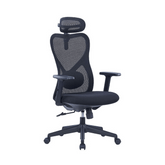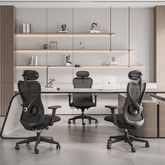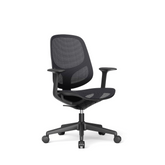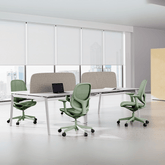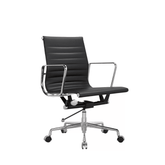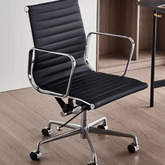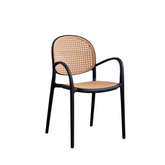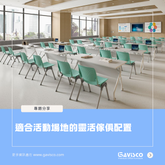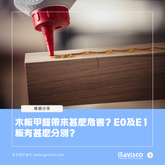Introduction: The Role of Foam in Office Furniture
Foam density plays a crucial role in the quality and longevity of office furniture, particularly in items like sofas and chair seat cushions. Drawing from insights on memory foam density and sofa foam selection, foam density is defined as the mass per unit volume, typically measured in kg/m³, indicating how much material is packed into the foam. Higher density means more material, leading to better support and resilience. In office environments, where furniture endures daily use, selecting the right density ensures ergonomic benefits and cost-effectiveness. This article explores foam differences in office sofas and chairs, compares low, medium, and high densities with data, and explains why commercial furniture favors high-density foam, such as 50 kg/m³ (often denoted as 50D).

Low, Medium, and High Density Foam: Differences and Data
Foam density is the weight per cubic meter (kg/m³). Low-density foam (15-25 kg/m³) is soft and affordable but compresses quickly, leading to deformation after 1-2 years of use. It's suitable for occasional home use but not ideal for offices due to poor durability. Medium-density (25-35 kg/m³) offers better support, lasting 3-5 years, with a balance of comfort and firmness—common in budget office chairs. High-density foam (35+ kg/m³, such as 50 kg/m³ or 50D) provides superior resilience, retaining shape for 7-10+ years. It excels in weight distribution and pressure relief, making it perfect for high-traffic commercial spaces.
| Density Level | kg/m³ Range | Durability (Years) | Best For |
|---|---|---|---|
| Low | 15-25 | 1-2 | Occasional use, budget items |
| Medium | 25-35 | 3-5 | Moderate office chairs |
| High | 35+ | 7-10+ | Commercial sofas and cushions |

Foam in Office Furniture
In office furniture, foam serves as the core for comfort and support. Office sofas and lounge armchairs, often in lounges or waiting areas, use thicker foam layers (4-6 inches) for plush seating during meetings or breaks. They require balanced density to accommodate multiple users without sagging. Chair seat cushions, typically 2-4 inches thick, focus on ergonomic support for prolonged sitting at desks. Memory foam variants in chairs contour to the body, reducing pressure points. The key difference lies in usage: sofas prioritize communal comfort and resilience, while chairs emphasize individual ergonomics and quick recovery from compression.

Why Commercial Office Furniture Uses High-Density Foam
Commercial office furniture, such as sofas in lounges and chair cushions in workspaces, typically employs high-density foam (e.g., 50 kg/m³ or 50D) for its exceptional longevity and durability. This density resists compression set (permanent deformation) better, maintaining shape under repeated use—essential in offices where furniture sees 8+ hours of daily occupancy. High-density foam avoids sagging, provides consistent ergonomic support, and reduces replacement costs. For instance, in memory foam variants, higher density ensures quick recovery and pressure relief, preventing discomfort in long meetings. Manufacturers prioritize it to meet commercial standards, ensuring safety and comfort for employees.

Conclusion: Choose Wisely for Lasting Comfort
Foam density determines the lifespan and performance of office furniture like sofas and chair cushions. While low and medium densities suit lighter use, high-density foam is the go-to for commercial settings, offering unmatched durability and comfort. Invest in quality to enhance your workspace.
References
Ecosa. (n.d.). Memory Foam Density and Quality. https://www.ecosa.com.hk/blog/post/memory-foam-density-and-quality.html
Zhihu. (2021, January 18). 沙发海绵密度多少合适?沙发海绵密度怎么选?. https://zhuanlan.zhihu.com/p/338135616
